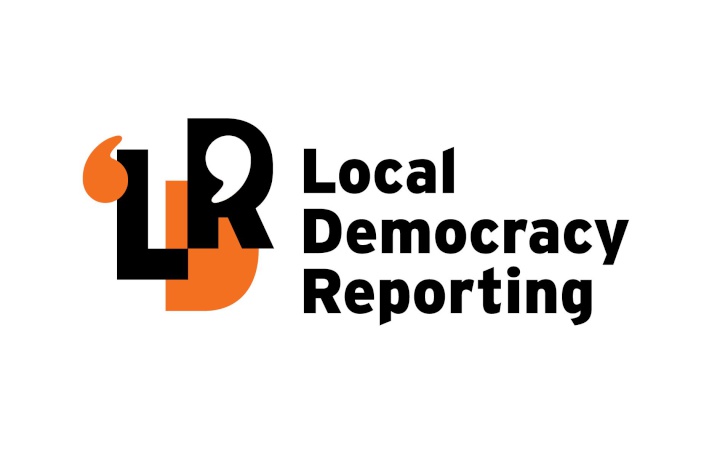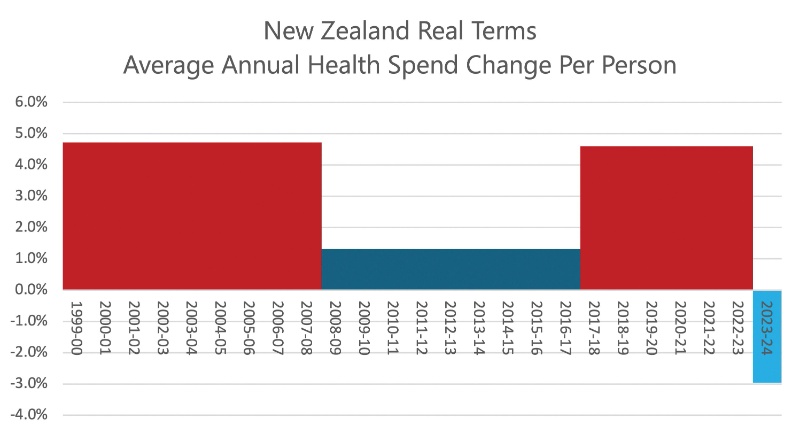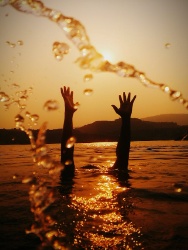As Auckland’s City Rail Link (CRL) rolls toward completion, LDR's Mary Afemata explores how the $5.5 billion dollar project has worked with and benefited from, generations of Pasifika talent.
Set for completion in November, CRL will connect Waitematā (Britomart), Maungawhau Station, and the new city-centre stations, providing faster, more efficient connections and enhancing Auckland’s rail system.
The CRL project has created job opportunities for Pasifika, Māori, and young people, who have played a pivotal role in shaping this landmark infrastructure achievement.
Since construction began in 2019, Link Alliance has supported rangatahi through programmes like Scaffolding through Sisterhood, the Progressive Employment Programme (PEP), and Young Gunz.
Local Democracy Reporting spoke with Link Alliance’s Morris Misilisi, Structures Supervisor at Te Waihorotiu Station, Willy Bernard, Senior Health and Safety Advisor at Maungawhau Station, and Manu Fisi'ihoi, Training and Verification of Competency Manager, about the Pasifika connection behind the CRL.
Fisi'ihoi says, “We’ve had young people come through who have been here since the beginning, since the very first cohort of the PEP intern program, who are still here on the project working, and have now moved on and transitioned into better roles, and are still here.”
He wishes other major projects would adopt similar programmes and says, “What’s really unique about this program specifically is that it’s the hands-on aspect.
“You’re actually doing the work. It’s not some kind of test or some sort of scenario you have to fill in to tick a box.
"And it’s not just a ‘Hey, we’re going to send you out on site one of these days.’ You are actually already out there and very fortunate for them as well.”
Interns are paid and gradually work up to 40 hours, allowing them to grow confident in their work environment.
“Being in this role is they see my face, they see someone that looks like them, talks like them, doing a role that isn’t really considered done by our people,” Fisi'ihoi says.
Regarding the work culture, Bernard emphasised prayer, mentorship, family, and community, all infused with Pasifika values.
"We pray before we do things. We sing hymns at celebrations. We really get into the language weeks on-site."
Misilisi adds how they incorporate Karakia (prayer) at work, saying, “We share it around with the Filipino brothers, Tongan, and Samoan, so everyone says a prayer. Not everyone’s into it, but we don’t force anyone … culturally for us Māori [and] Pasifika, [it] gives us that extra [sense knowing] we’re going to be safe today, safe tomorrow, and we’re going to make it home.”
Their team warm-ups include the Tongan dances, making for a fun start to each day, with Bernard explaining, ”It’s all about empowering staff and helping them to grow.
“We've had people that have started on the gate and now are leading hands. We have people who started on traffic, who've become health and safety advisors and stuff like that, just to promote them in there.
“And for me, being Polynesian on this project, I think the proudest thing is not losing myself in there.
“I can sit in meeting rooms, [and] planning rooms, sit with the ministers from the government in there, but I'll still have a cup of tea with the boys on the ground in there. They'll still try to take my opinion in there.
“Don't lose who you are in that,” he said, emphasising the importance of staying grounded.
Fisi'ihoi expressed pride in his Pasifika heritage, saying, “I didn’t really see it at first, but my dad and my younger brother used to work on the project as well.
“And you know, you don’t really pay attention to it when people talk about that kind of stuff. ‘Hey, your son, I saw him - he’s training, or he’s delivering inductions’.
“Then I hear other men talk about my dad going around, being really proud of that.
“In that sense, ‘Yeah, I should be proud. I should be honoured that people see that.’ It helps me to really realise that I’m more than just myself.
“There is a bigger picture, especially with the younger generation of Māori and Pasifika, as well as non-Māori and non-Pasifika, who come through. They see you as an example."
At its peak, Link Alliance employed over 2000 workers and completed more than 13,000 inductions. The Link Alliance Education Engagement Programme (LEEP) welcomed over 300 rangatahi to the site, while the PEP graduated 43 participants.
Scaffolding through Sisterhood engaged 16 high-school wāhine, and 66 university interns participated in summer internships. More than 1500 rangatahi took part in outreach events.
Both Bernard and Fisi'ihoi have worked with three interns, including females, who were able to grow through their experience.
"So they came on site, shy young girls at school,” Bernard says. “It became a family thing. I think with our culture, we really embrace looking after our younger people.”
Fisi'ihoi says, “They've changed us. They've changed me. They've changed us as mentors.”
In his experience, Fisi'ihoi says that some organisations may underestimate the importance of investing in young people, adding it is a waste of time or budget, and prefer to allocate resources elsewhere.
“But to invest in our young people and to grow the future workforce of New Zealand, man, it’s awesome,” he says.
“And I think that’s something we really do believe in—leaving that legacy with those who are here now and those still to come, so they can feel that throughout this project.
“It’s not just some sort of, 'Hey, let’s put some tracks together like Lego and chuck a train on it.' There’s a lot of mana here, and yeah, I definitely feel it when I go for my walks through the tunnels.
“I see some of these young guys out there, and girls, and I’m just like, ‘Man, I wonder if they think about this thing, like, I was a part of building this.’
“I go home and tell my family that all the time. [Y’know], one day when I take my daughter through this train, I’m gonna say, ‘Daddy was a part of this. I probably didn’t do the concreting, but I was a part of this.’”
Misilisi reminds his staff that they are working on the biggest project in New Zealand.
“So they know what they're worth, be it a labourer, a chippy, or a carpenter. It doesn’t matter.'It could be a cleaner. We're all one. We're all working towards that same goal.”
He says, "If you get the guys to think for themselves outside the square, make decisions, empower them to make decisions and have the support, they become better. And that, for me, is always upskilling - be it Māori, Pasifika, or any other ethnicity."
He recalls starting the ‘Young Gunz’ initiative for young workers, giving them a voice and leading many to advance to roles such as project managers or engineers.
“When I did that down at [North Auckland Line], a lot of the young ones that went through it ended up being project managers, or project engineers, or they started moving up, and they always refer back to running the toolboxes in front of 20 to 30 people.”
He hopes the project will help them gain experience, confidence, and the ability to challenge ideas and stand up for what they believe is right.
"That's what I want to leave with people who have worked with them in this space."
Bernard adds: “A lot of our workers that we have empowered and mentored, they're excelling and really doing well in the workspace. And hopefully, what we've done for them, they'll do for the next.”
Many key individuals have shaped the project’s success, with the late Mary Samasoni standing out.
A beloved mentor and leader, Samasoni passed away in April 2024. Her dream was to see Māori and Pasifika thrive, particularly in the construction and infrastructure industries.
Her legacy lives on through the youth and training programmes she championed.
In a tribute published in the September 2024 edition of Follow the Track, Link Alliance reflected on Samasoni’s impact: “For almost four years, Mary was an instrumental part of Link Alliance’s programmes, contributing to youth and social outcomes.
“She created Scaffolding Through Sisterhood, streamlined school visits, and played a key role in providing training and upskilling opportunities. Mary's ability to build strong relationships and her tenacity changed the lives of many.”
Samasoni’s influence is evident in all three men who speak of her impact.
“Mary was the driver. She was the link between the Pasifika people and the Link Alliance. The main thing with Mary, she'd follow up, she'd call these people,” Misilisi said.
Fisi'ihoi says, “She literally played the role of the mother for all Pasifika people here. She pushed education. She really went into battle to get schools here, to get different people into our lives, to connect us and into pathways. She was really that person. Mary holds a very special place.”
Bernard adds: “The same warmth that Manu shares has definitely pushed me to be better, to stand up in rooms where we normally don’t… She was a bigger sister for me, always looked after our people.”



 Gordon Campbell: On The Americanising Of NZ’s Public Health System
Gordon Campbell: On The Americanising Of NZ’s Public Health System Lawyers for Climate Action: National MP’s Bill Raises Environmental And Constitutional Concerns
Lawyers for Climate Action: National MP’s Bill Raises Environmental And Constitutional Concerns LGNZ: Strong Community Voice Vital For RMA Reforms
LGNZ: Strong Community Voice Vital For RMA Reforms NZ Police: Gang Conflict Warrant Issued Following Tairāwhiti Gang Tensions
NZ Police: Gang Conflict Warrant Issued Following Tairāwhiti Gang Tensions Green Party: Greens Question Govt Commitment To Environmental Protection With RMA Reform
Green Party: Greens Question Govt Commitment To Environmental Protection With RMA Reform Water Safety NZ: Children Need Us To Protect Them Around Water
Water Safety NZ: Children Need Us To Protect Them Around Water  NZ Government: Cost Of Living Support Coming For 1.5 Million New Zealanders
NZ Government: Cost Of Living Support Coming For 1.5 Million New Zealanders


